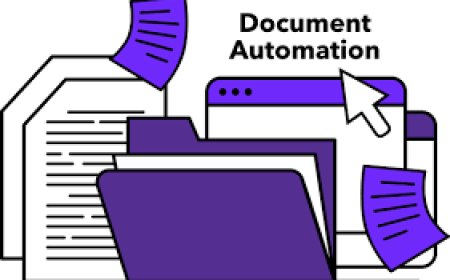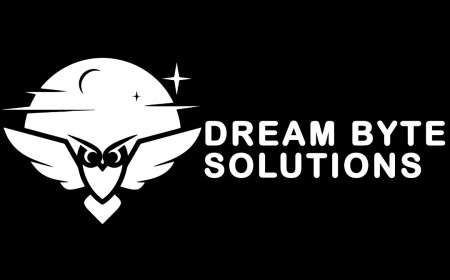Creating Custom Office Automation Solutions with Golang: A Developer’s Guide

In todays fast-paced business world, office automation solutions are essential for improving efficiency and reducing manual effort. Custom automation tools allow businesses to streamline operations, handle repetitive tasks, and ensure greater accuracy across various departments. For developers seeking to create their own tailored solutions, Golang offers an excellent platform due to its performance, simplicity, and scalability.
One tool that can significantly enhance the process of automating office workflows is UniDoc, a suite of GoLang libraries designed specifically for handling PDF and Office document processing. Whether youre generating documents, filling out forms, or adding digital signatures, UniDoc helps you integrate powerful document handling capabilities directly into your automation systems.
In this guide, well walk you through how to leverage Golang to create custom office automation solutions, with an emphasis on document automation using tools like UniDoc.
Why Golang for Office Automation?
Golang, also known as Go, is a statically typed, compiled language developed by Google. Its minimalistic design prioritizes speed, efficiency, and scalability, which makes it an ideal choice for building custom office automation systems.
Advantages of Golang:
-
Speed: Golang is a compiled language, allowing for faster execution compared to interpreted languages like Python or JavaScript.
-
Concurrency: Golang has built-in support for concurrent tasks, enabling developers to manage multiple workflows at once, such as processing multiple files or handling requests from several users.
-
Simplicity: Go's syntax is simple and intuitive, reducing the learning curve for developers and speeding up the development process.
-
Cross-platform compatibility: Gos ability to run on various operating systems ensures that your automation solutions are scalable and adaptable to your organizations needs.
These advantages make Golang a great choice for creating automation solutions that need to handle everything from document processing to workflow management.
UniDoc: A Game Changer for Document Automation
Document management often represents a significant part of office workflows, and automating this process can save businesses a lot of time. UniDoc, with its GoLang-based libraries, offers an efficient way to integrate document handling capabilities into your automation systems.
Features of UniDoc:
-
PDF creation and manipulation: Easily generate and modify PDF documents, allowing businesses to automate the creation of invoices, reports, or contracts.
-
Form filling: Automate the process of completing PDF forms, whether for internal use or for customer-facing documents.
-
Digital signatures: With UniDoc, adding and verifying signatures in PDF files is simple and secure.
-
OCR (Optical Character Recognition): Extract text from scanned documents to convert them into editable formats, making them searchable and easier to work with.
By incorporating UniDoc into your Golang-based office automation system, you can automate complex document tasks like never before.
Key Steps to Building Office Automation Solutions with Golang
1. Define the Requirements
To begin creating your automation solution, start by identifying the office tasks that can be automated. These may include:
-
Document creation and management
-
Data entry and validation
-
Scheduling and email notifications
-
Workflow approvals and routing
Once you have identified these tasks, you can start designing a system that addresses your specific needs.
2. Choose the Right Libraries and Tools
Golangs strength is its simplicity, but often, youll need to extend its functionality by using third-party libraries. For document automation, UniDoc is a must-have tool. Other libraries you may consider are:
-
Go-redis for caching and session management
-
Gin or Echo for building APIs
-
GORM or Go-sqlite for managing local databases
By combining these libraries, you can build a highly functional and scalable automation solution.
3. Leverage Golang's Concurrency
One of the most powerful features of Golang is its concurrency model. Using goroutines and channels, you can run multiple tasks at once, such as:
-
Processing multiple documents simultaneously
-
Handling real-time notifications while also working on data processing
-
Managing multiple users interacting with the automation system at once
This allows you to build efficient, high-performance automation systems that can scale as your needs grow.
4. Ensure Security and Compliance
Security should be a priority when building office automation systems, especially if you're handling sensitive data. Some best practices include:
-
Using encryption for data storage and transmission (e.g., AES, TLS)
-
Securing access to automation tools with proper authentication (OAuth, JWT)
-
Ensuring documents are signed digitally to prevent tampering
With UniDoc, you can add robust security measures to your document automation, ensuring that sensitive information remains protected.
5. Testing and Debugging
Thorough testing is essential before deploying any automation system. Ensure that:
-
Unit tests are written for every feature (e.g., document processing, data entry)
-
Integration tests check that all components work together smoothly
-
Load testing simulates real-world usage to verify the system can handle high volumes of requests
Golangs built-in testing capabilities make this process seamless and efficient.
6. Deployment and Monitoring
After testing, deploy your office automation system and set up monitoring to track its performance. Tools like Prometheus and Grafana can help you keep an eye on metrics like system uptime, resource usage, and task completion times.
With Golangs lightweight nature, your system can run smoothly even under heavy load, making it a great option for businesses of all sizes.
Benefits of Custom Office Automation Solutions
Custom-built office automation systems offer several key benefits over off-the-shelf software:
-
Tailored to Specific Needs: You can design the system to handle exactly what your business requires.
-
Scalability: As your business grows, your automation system can scale to accommodate more tasks or users.
-
Cost Savings: While theres an initial investment, custom solutions ultimately save money by increasing efficiency and reducing labor costs.
-
Competitive Edge: Automating key processes gives you an edge over competitors still relying on manual methods.
Conclusion
Creating custom office automation solutions with Golang is a powerful way to enhance business efficiency and productivity. By leveraging tools like UniDoc, developers can easily integrate document automation features into their systems, reducing manual tasks and improving workflow. With the right tools and approach, Golang enables you to build a tailored solution that grows with your business, streamlining operations and boosting your organizations bottom line.








&srotate=0)




























